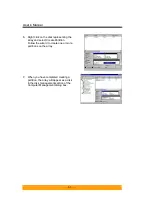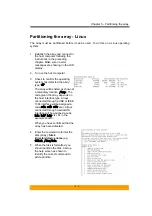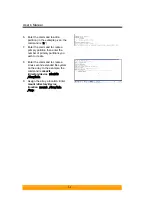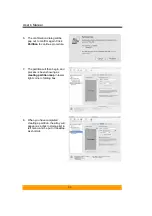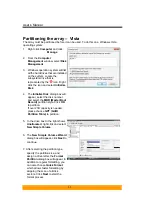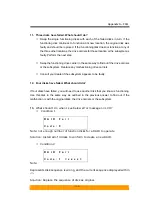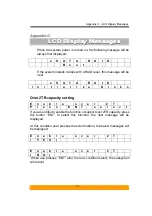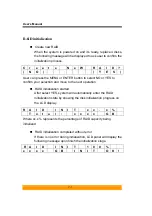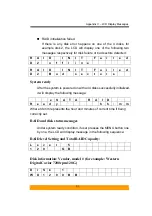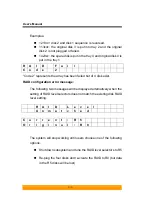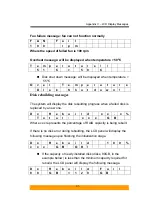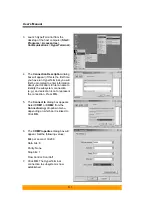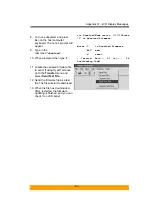
User’s Manual
- B-2-
Parity
Parity information is redundancy information calculated from actual data values. If any
single piece of data is lost, the data remaining and the parity information can be used
together to compute the lost data. Parity information can either be stored on a separate,
dedicated drive, or be mixed with the data across all the drives in the array.
RAID
(Redundant Array of Independent / Inexpensive Disks)
A disk array in which part of the storage capacity is used to store redundant information
about user data stored on the remainder of the storage capacity. The redundant
information enables regeneration of user data in the event that one of the array member
disks or the access path to it fails. See Parity. Different RAID level offer different data
throughput speeds and fault tolerance (data redundancy). RAID 0 does not feature
redundant information but is nonetheless considered a special type of RAID.
Serial ATA
(Serial Advanced Technology Attachment)
Serial ATA (often abbreviated as SATA or S-ATA) is an advance on the commonly used
Parallel ATA interface for data storage devices. Serial ATA allows data transfer up to 1.5
Gbps. It has an additional advantage parallel ATA in that cables are thinner, so airflow
within computer cases is less impeded, and can extend to one meter in length (against
only 40 cm for parallel ATA).
Summary of Contents for S4-ESTT
Page 1: ...easyRAID S4 ESTT eSATA 1 5Gb to Serial ATA Disk Array System User Manual Version 1 0 ...
Page 2: ......
Page 3: ...S4 ESTT eSATA 1 5Gb to serial ATA Disk Array System User Manual ...
Page 4: ......
Page 9: ...Preface 3 UL Listed This equipment meets UL s safety requirements ...
Page 20: ......
Page 30: ......
Page 46: ......
Page 53: ...Chapter 5 Partitioning the array 5 7 ...
Page 56: ......

